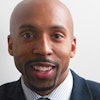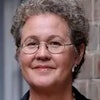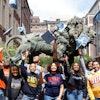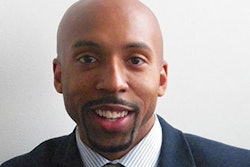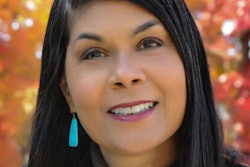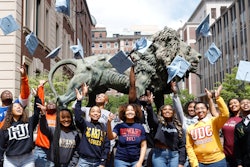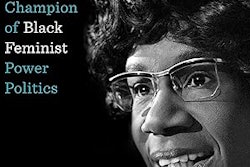Drs. Marybeth Gasman and Levon T. Esters have written an important and useful historiography of Historically Black Colleges and Universities.
HBCU: The Power of Historically Black Colleges and Universities, published by Johns Hopkins University Press, provides personal anecdotes from past and present HBCU students and leaders about the critical role that these storied institutions have played throughout history. But the book is not merely an exercise in nostalgia. The authors take a thoughtful approach to examining HBCUs today and challenge us to reimagine what HBCUs should look like in the future.
Esters, a graduate of Florida A&M University and North Carolina A&T State University, powerfully shares fond memories of his experience as a student at these institutions.
“Whenever I give a talk and share my educational journey, I like to open by saying that I bleed orange and green, but I am also a die-hard Aggie,” writes Esters, who is now dean of the Graduate School and the vice provost for graduate education at The Pennsylvania State University. “To say that I am a proud HBCU graduate is an understatement. To me, there is something special about being a two-time HBCU graduate, which is something I will forever cherish. Part of the reason this fact is worth mentioning is that it proves wrong those who think the HBCUs are not good enough to prepare students for the world.”
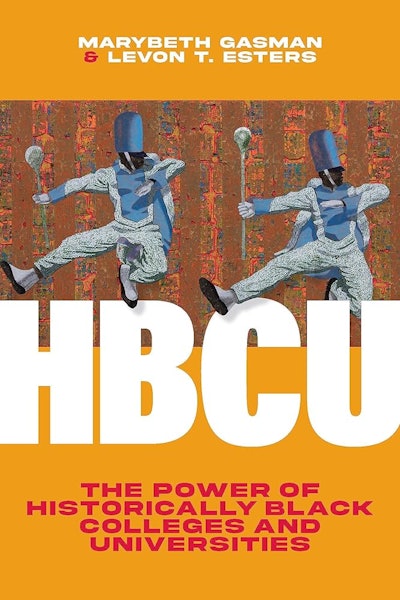 HBCU: The Power of Historically Black Colleges and Universities was published by Johns Hopkins University Press.
HBCU: The Power of Historically Black Colleges and Universities was published by Johns Hopkins University Press.
This is not to suggest, however, that many HBCUs do not face serious challenges. Esters and Gasman are quick to point out that HBCUs, like colleges and universities in general, are not monolithic. They are quite diverse. And the challenges, ranging from the lack of more Black women in leadership positions, are worthy of serious discussion and debate. Some of these challenges, Gasman and Esters rightly note, include “customer service concerns, leadership instability and preparation, board ineffectiveness, low graduation rates, financial instability and subsequent threats to long-term sustainability, and the need to tell better HBCU institutional stories.”
Featured in the book are the voices of HBCU leaders who reflect on these challenges, as they work to foster an environment that supports student success. Low graduation rates, Gasman and Esters point out, “have long plagued HBCUs because these institutions educate large numbers of low-income students — nearly 70% of HBCU students are eligible for Pell Grants, which means these schools enroll the highest number of low-income students in the nation.”
Despite the wave of philanthropic contributions that MacKenzie Scott has made in recent years to some HBCUs, many of these institutions struggle to compete for philanthropic dollars. The real challenge also relates to the high turnover in HBCU leadership and the governance issues that tend to complicate relationships between the president and the board of trustees. As of this writing, there are more than 20 HBCU presidential vacancies, one of the highest in recent years. To underscore the seriousness of this issue, many of the HBCU leaders that Gasman and Esters interviewed for their book were either forced out of their roles or abruptly resigned.
As attacks on DEI within higher education continue, HBCUs have rightly become a destination for so many students who are looking for a high-quality education. The increased enrollment at institutions like Morgan State University, Howard, and North Carolina A&T, for example, bear this out.
“Not only have HBCUs been leaders in creating learning environments that are deeply supportive and caring,” writes Gasman and Esters, “but these institutions also reflect diversity among the student body as they have had to be responsive to the needs of diverse populations in ways that most PWIs have failed to do. Thus, HBCUs are better positioned to serve as exemplary models of DEI efforts within higher education.”
Gasman and Esters point out that the goal in writing the book was to “examine, in deep and meaningful ways, the power of HBCUs.” In this regard, they are successful, marshalling rigorous research, oral history interviews, and a reliance on a set of diverse data set to tell the narrative.
These institutions have produced successful corporate leaders, well-known scholars, civil rights leaders, and politicians — most notably, Vice President Kamala Harris. The question that Esters and Gasman ask us to consider is how we can collectively work to ensure that the future of the institutions remain as strong and vibrant as their past.
It’s an important question worthy of an answer.
Listen here to the podcast conversation between Drs. Watson, Gasman and Esters.


